Saint-Florent-le-Vieil to Le-Cellier
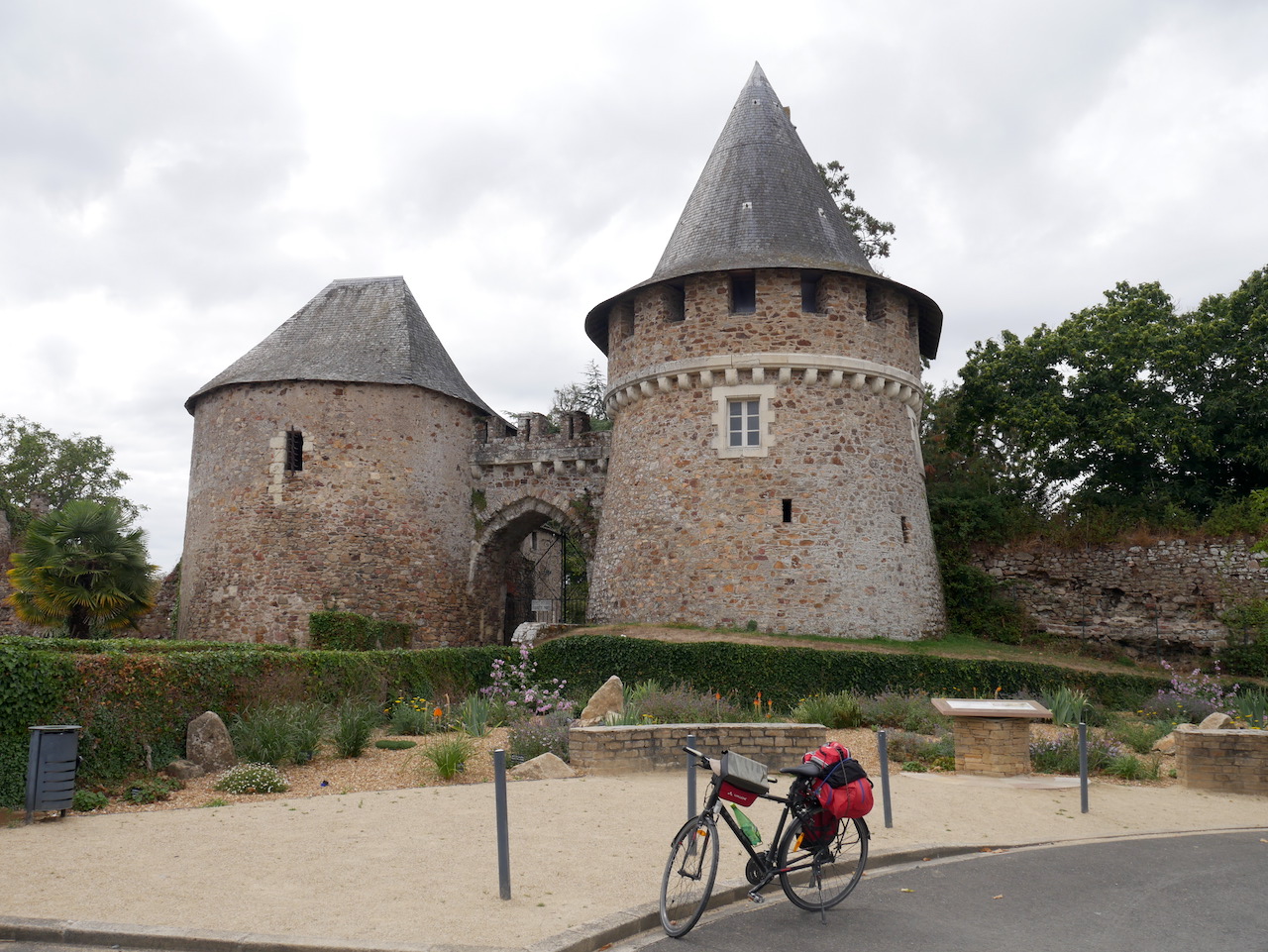
Pays de la Loire
4. Saint-Florent-le-Vieil to Le-Cellier
Difficult
8h
32,1km
+375m
-362m
Step
Embed this item to access it offline
As soon as you leave Saint-Florent-le-Vieil you will walk on paths shaded by hedges on the banks of the Loire. You will take the direction of the bocage with its cereal fields and its orchards irrigated by boxes (dead arm) until you cross the Loire. An unusual landscape compared to the previous stages. After Oudon, you will go up to the St-Méen hill to discover a beautiful panorama of the Loire valley, before going down again in the direction of the Cellier.
10 points of interest
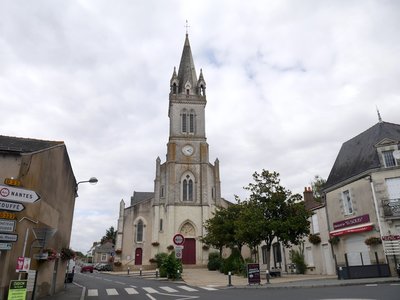
L’église Saint-Martin d’Oudon - Amis saint Colomban TouristSaint Martin's Church in Oudon
The construction of the church of Saint Martin was decided in 1845. The old church, under the invocation of Saint Martin de Tours, dates from the 12th century. The church was restored in 1818. In 1841, Pierre Leroux, parish priest, endows the church with a relic of Saint Martin of Tours, which is due to the R.P. Hus, of the Society of Jesus. The box of holy oils dates from 1787.
Admire the choir with its frescoes and woodwork.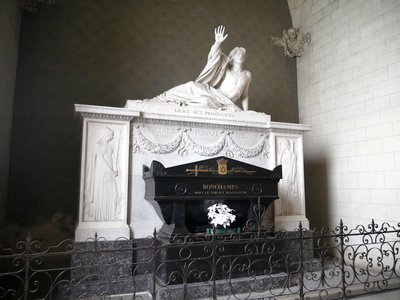
Tombeau de Charles de Bonchamp dans l’église abbatiale de Saint-Florent-le-Vieil. - Amis saint Colomban HistoricalThe Vendee Wars begin in Saint-Florent-le-Vieil
The Vendée War is the name given to the civil war that opposed, in the West of France, the republicans (nicknamed the "blues") to the royalists (the "whites"), mainly between 1793 and 1796), during the French Revolution.
As everywhere in France, the Vendée experienced peasant demonstrations between 1789 and 1792.
Spread over three years, the war went through several phases, with a brief period of peace in the spring of 1795. It ended at the beginning of 1796, after more than 200,000 deaths and much destruction.
More info: Wikipedia
Saint-Florent-le-Vieil pays homage to two characters from these murderous wars:
- Jacques Cathelineau, see article chapel of the same name...
- Charles de Bonchamps
He served with distinction in the U.S. War of Independence. He was a captain in the Aquitaine regiment when the French Revolution, to which he was hostile, caused him to leave the service in 1791, after refusing to take the oath of office to the Constituent Assembly1. He retired to his castle, La Baronnière, at the Chapelle Saint Florent near Saint-Florent-le-Vieil; it was there that the insurgents of the Vendée came to get him to put him at their head.
A prudent and skilful general, he sometimes beat the Republican troops; but his colleagues often accused him of indecision and lukewarmness. He was chosen in 1793 with Maurice-Louis-Joseph Gigot d'Elbée as general of the Catholic and Royal Army of the Vendée. He first achieved some success in Anjou, and contributed to the capture of Bressuire and Thouars, but failed in front of Nantes.
He remains famous for having pardoned nearly 5,000 republican soldiers following the battle of Cholet on 17 October 1793, a battle during which he was mortally wounded.
More information: Wikipedia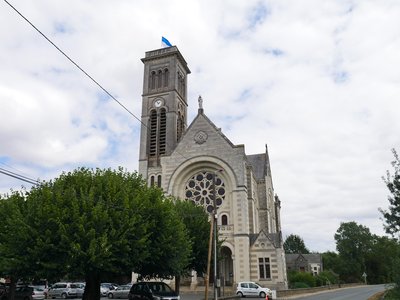
Basilique Notre-Dame de Marillais (19e siècle) - Amis saint Colomban TouristShrine of Our Lady of Marillais
According to a very old tradition, the Virgin Mary appeared to Saint Maurille, bishop of Angers, around 430. At the place called La Croix du Pichon, at the confluence of the Evre and the Loire rivers.
Maurille had come to visit his brothers, the monks of Mont-Glonne, and had come down to the foot of the hill to pray there in solitude. A modest oratory was then built on what would become the commune of Marillais (Maine-et-Loire). For about fifteen centuries and practically without interruption despite many events to the contrary, the Virgin Mary has been venerated in this place.
The present sanctuary. The sanctuary has long been a Mecca of pilgrimage and Christian spirituality, linked for a long time to the Benedictines who held the nearby abbey of Saint-Florent-le-Vieil, despite the ravages of the Wars of Religion and Terror. The site was recognized in the 19th century, then crowned with the name of Notre-Dame-du-Marillais by Bishop Rumeau, with the authorization of Pope Pius XI, in 1931.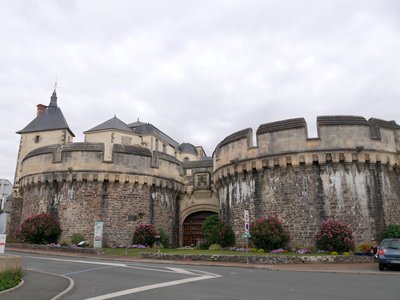
Château d’Ancenis (15e siècle) - Amis saint Colomban HistoricalSchloss Ancenis
The stronghold was occupied as early as the 10th century. Château des Marches de Bretagne, it is part of a defensive curtain with the castles of Champtoceaux and Oudon that you will discover during your stopover. Their strategic positions exposed them to multiple sieges between the 12th and 16th centuries.
Of the castle of Ancenis there remains the entrance chateau built at the end of the 16th century and the beginning of the 17th century. It has a particular defensive device: a drawbridge precedes the portcullis, in a covered gallery, arranged in a chicane.
The Renaissance dwelling, a residential programme initiated by the couple Claude I of Rieux and his wife Suzanne de Bourbon, was built around 1529. Its courtyard side facade is decorated in the early Renaissance style, while the structure of the dwelling remains Gothic.
Between 2013 and 2015, the Renaissance dwelling of the castle was rehabilitated. This involved both the consolidation of structures, the resumption of openings and sculptures.
L’église Sainte-Madeleine à Champtoceaux - Amis saint Colomban TouristSainte-Madeleine Church in Champtoceaux
The first Christian community appeared around 350 on the Champtoceaux hill, probably already fortified. In 768, Charlemagne is in Champtoceaux during the Fêtes Pascales, this confirms the presence of a church. The passage of the Breton and then Norman armies ravaged the place of worship. The monks of Marmoutiers restored the building and built the Saint-Jean-Baptiste priory.
In 1794 the Republicans set fire to the village and the church was destroyed. After the Concordat a new church, in neo-Greek style, was built and was inaugurated in 1819. In 1858 a new church had to be rebuilt because of insufficient capacity.
Information board in the church.
The toll of Champtoceaux (13th century) whose revenues went to the abbeys of Malmédy and Stavelot (Belgium) marks the border between Brittany and Anjou.
Porte de l’ancienne ville et du château de Champtoceaux - Amis saint Colomban HistoricalChamptoceaux Castle
This monument is the only vestige of the fortress of Champtoceaux located on the border between Anjou, Poitou and Brittany. It was a strategic site throughout the Middle Ages and changed hands with the passing of battles and alliances. It is located in the Marche de Bretagne and is part of the important defensive system that borders the former border of the Duchy from the Atlantic to the English Channel, with the strongholds of Oudon and Ancenis nearby. The medieval city was at the centre of the main conflicts of the time and saw in and under its walls the passage of John the Landless, Philip Augustus, Henry II of England and Saint Louis.
In 1420, John V, Duke of Brittany and Lord of Champtoceaux, had the fortified ensemble of the old city destroyed and caused the exile of the inhabitants from the city.
Façade de l’église Saint-Martin au Cellier - Amis saint Colomban TouristSaint-Martin's church in Le Cellier
The church was built in 1895-1896 by the architect René Ménard, but remained unfinished on the eve of the First World War. The completion of the church, under the leadership of the architect Emile Libaudière, was continued in 1922. In 1925, it received a painted decoration, executed by brothers Paul and Albert Lemasson, which was completed in 1932. The church is a building with a plan centred on a Greek cross covered by a dome on pendentives, framed by four rectangular crosses with barrel vaults, with a hemicircular apse. The painted decoration consists of three sets: the legend of St. Martin, patron saint of the parish, in the apse; the Way of the Cross, all around the church; the monument to the war dead of 1914-1918. It was restored between 2005 and 2008.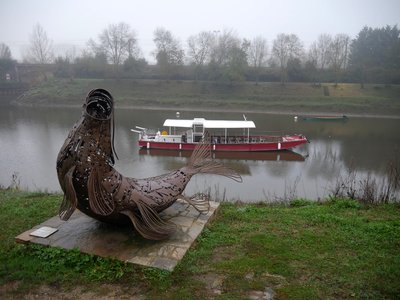
« Carpe royale » Jean-Marc Bourasseau, 7ème Symposium international de sculpture, 2002 - Amis saint Colomban CulturalSculptures on the port of Oudon
After crossing the Loire on the bridge of Champtoceaux in Oudon, you will take the road towards the port of Oudon to discover a set of sculptures.
The port of Oudon exists since the installation of the railway in 1848. It was dug in a branch of the Loire in order to keep a free access to the river which is fed by the river Hâvre. A lot of goods transited through it, sand, slates, wood, wine barrels and livestock were weighed and taxed before being shipped by train.
An International Symposium of Monumental Sculpture, created in 1996, is held every two years.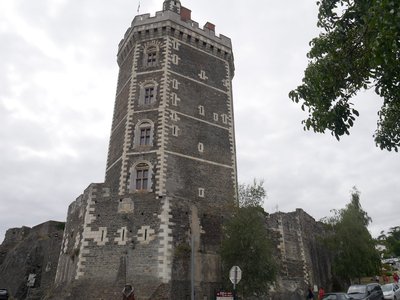
Le donjon du château d’Oudon - Amis saint Colomban HistoricalSchloss von Oudon
The location is strategic to cross the river, Le Hâvre, communicate with the Roman road and the configuration of the banks of the Loire which favours the establishment of a port.
The first castle of Oudon was built around 843 to face the Vikings, it was located at the confluence of the river and the Loire. In 1392, Alain de Malestroit, Lord of Oudon, obtained from the Duke of Brittany, John IV the right to build a new castle on the ruins of the previous one, devastated by the wars.
The current castle is built in schist and gneiss stone, the horizontal and corner links are in tuffeau. During the Revolution, the estate was confiscated in 1794, and became a national asset; divided into plots, it was bought in 1807 by local owners who dismantled parts of the castle to recover the materials. In 1820, the General Council of Loire-Inférieure bought the castle.
Take advantage of your visit to go up to admire the landscape of the Loire Valley from the keep.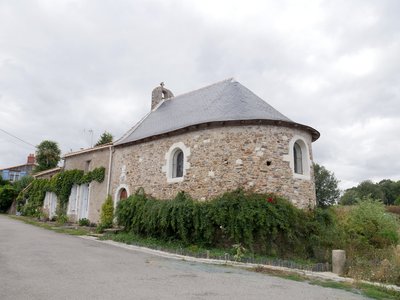
La chapelle Saint-Méen, propriété privée - Amis saint Colomban TouristSaint-Méen Chapel at Le Cellier
The creation of the priory is linked to a legend that dates back to the 7th century, when Méen, returning from a pilgrimage to Rome, had to fight a dragon that terrorized the people of the Cellier. This legend actually reflects the survival of pagan cults, of Celtic origin, still vigorous at that time and against which Méen had to fight. Following the Norman invasions of the 9th century, the priory was rebuilt in 1132. It served as a stopover for pilgrims coming by boat from the banks of the Loire and Sarthe rivers to reach the monastery of Gaël. Devotion to the Saint took shape in pilgrimages practiced until the 18th century to cure skin diseases, in particular a kind of leprosy that gnawed at the hands down to the bone, and which was called "mal Saint-Méen" (Saint-Méen's disease).
The present Saint-Méen Chapel is thought to date from the 17th century. The nearby priory and the chapel are private and cannot be visited.
According to tradition, the monk Méen was originally from Wales in the 6th century.
He passed through the Cellier on his return from a pilgrimage to Rome and Tours. He met a snake that was ravaging the country and he tamed it. A monastery was built on this spot, it was destroyed by Viking invasions in the 10th century.
New research by Noël-Guy Tonnerre, University of Nantes, indicates that the monastery was linked to the passage of the monks of the abbey of Gaël founded by Saint Méen, near Saint-Méen-le-Grand (Ille-et-Vilaine). While fleeing the Vikings, the monks took the relics of the saint to deposit them there before crossing the Loire.
Description
Leave the square in front of the Saint-Florent abbey church in the direction of the Duchess of Angoulême memorial, pass to the left of the monument and the sports ground in the direction of the cemetery car park, rue Les Coteaux, to the right, rue Saint-Maurille, stay on your right, Chemin Saint-Nicolas, rue du Vieux Bourg.
- Turn right at the roundabout, rue de l'Évre, take the pavement of the road bridge to cross the river Évre, turn right on the grazing path, turn right on the path that goes down towards the Loire, turn left along the Loire river for 4 600 meters, follow the Loire, turn left at the end of the path towards La Loge en Vallée, turn right at the crossroads with tarmac road, stay on your right at the crossroads.
- Turn right at La Rabotière, first road on the right along the ponds, straight ahead at the crossroads of 4 roads, continue straight ahead, staying on your right at the crossroads. After the pond on your left, turn right in the direction of the quarry, go along the pond on your right, rue des Garennes, turn left in the direction of Le Fourneau.
- On the right, rue de la libération, D 763, go under the bridge over the Loire (you are 500 metres from the town of Ancenis by the bridge) continue along the path that follows the left bank of the Loire, at the Les Brevets crossroads straight ahead in the direction of the bocage, on the right along the lake,
- Turn left at the crossroads with asphalt road, first road on the right, rue des pêcheurs, at the roundabout turn right along the municipal campsite of Drain-Beauregret, on the right at the second crossroads, stay on the asphalt road until La Rompure, road on the right in the direction of the banks of the Loire.
- Follow the path that crosses the brook on your left then on the right while remaining on the edge of the dead arm, cross La Patache while remaining on the edge of the water, fork at the second path on the left in the direction of Champtoceaux (you can visit Champtoceaux by taking the cemetery street slightly on your left at the crossroads with rue de Bretagne), on the right rue de Bretagne D 751, on the right to take the bridge over the Loire in the direction of Oudon
- First road on the left after the small wood, C 20, cross Le Hâvre, follow the small port and its sculptures straight ahead at the crossroads, C 11, route de Ferry, stay on your left to follow the railway line
- At the end of the asphalt road take the path on the right that goes up the hill in the woods towards the Saint-Méen chapel, take the street that goes along the chapel, Impasse du Point de Vue, on the left, Route des Folies Siffait, C 5
- Cross La Genaudière, continue on the dirt road you go down towards the railroad, take the underground of the railroad, turn right, after 2 400 meters take the third underground on the right under the railroad, Chemin du Sault, right rue des Mazères, second street on the left, rue St-Méen you have arrived.
- Departure : Saint-Florent Abbey Church du Mont-Glonne, Place Jeanne Bussonnière, 49 410 Saint-Florent-le-Vieil
- Arrival : Saint-Martin Church, Place Saint-Méen, 44 850 Le Cellier
- Towns crossed : Pays de la Loire
Altimetric profile
Report a problem or an error
If you have found an error on this page or if you have noticed any problems during your hike, please report them to us here:









